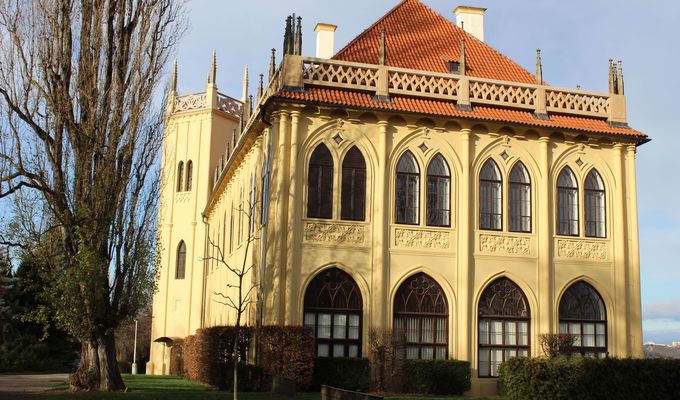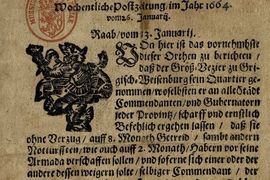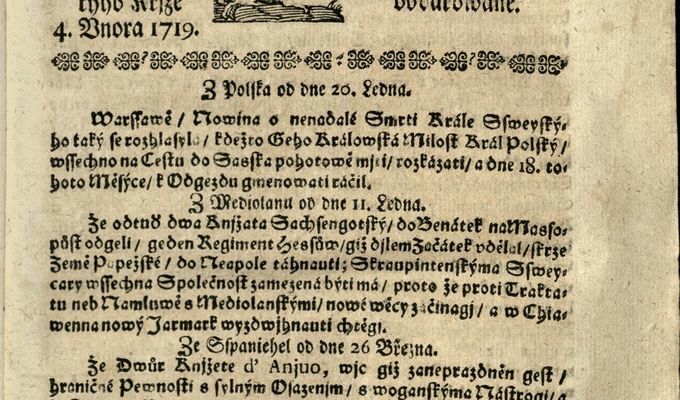The Journals Department of the National Museum Library has a work area, Study Room and depository in the former summer palace of Royal Hunting Preserve, commonly called "zámeček ve Stromovce" (castle in the Tree Park). The castle is one of Prague's unique memorial structures, noteworthy for its architecture, history and placement. The Journal Department, along with its collection of newspapers and magazines moved here in 1946, from the main museum palace on Wenceslas Square.
The depositories contain an almost complete collection of bohemical periodicals, i.e., newspapers, magazines and other publications printed at least twice per year on the territory of Bohemia, Moravia or Silesia.
Up until 1992 (except for the span 1939-1944), the Journal Department collected periodicals printed in Slovakia, and from 1919-1938, the collections also amassed newspapers and magazines printed in Carpathian Ruthenia. Besides unique material, the collection is valuable for its long-running series of Czech and German daily printings of various political leanings. Foreign periodicals found their way into the collections through a variety of means, primarily from European lands, but also some from America.
The collection of newspapers and magazines in the National Museum Library is a living collection; the oldest items are from the latter half of the 17th century, while the newest are from 'today' and this boundary moves every day. The department is the recipient of compulsory prints, where every publisher in the country is required to supply one copy of every publication. The collection grows by around 5000 each year - new editions of newspapers and magazines. The 'small castle' which is home to the Journal Department is no longer capable of housing all this material, so the department has detached depositories in Terezín.
The periodical collection is preservative in nature; the department is tasked with safeguarding and maintaining newspapers and magazines in good condition for future generations. Like other collections of the National Museum, it is part of our cultural heritage. Unfortunately, newsprint from the latter half of the 19th century is quite acidic and disintegrates over time, sometimes in a matter of a few years. For that reason, it has become necessary to seek methods to preserve at least the informational content of those items that are quickest to disintegrate and simultaneously are most often requested. Digitalization of such material is a lengthy process and there are not enough people available to do the job properly, so since 2005, the department has been involved in the digitalization program Kramerius, coordinated with the National Library. A long-term goal is to create our own digitizing workshop in the National Museum Library, which would supplement the existing digitalization workshops in the country.
Newspaper and magazines are sought-after historical sources, since they document first-hand the events of individual days of our history. The collection is available to the public in the department's Study Room only one day per week, partly to limit damage to the items, partly due to inadequate personnel.



